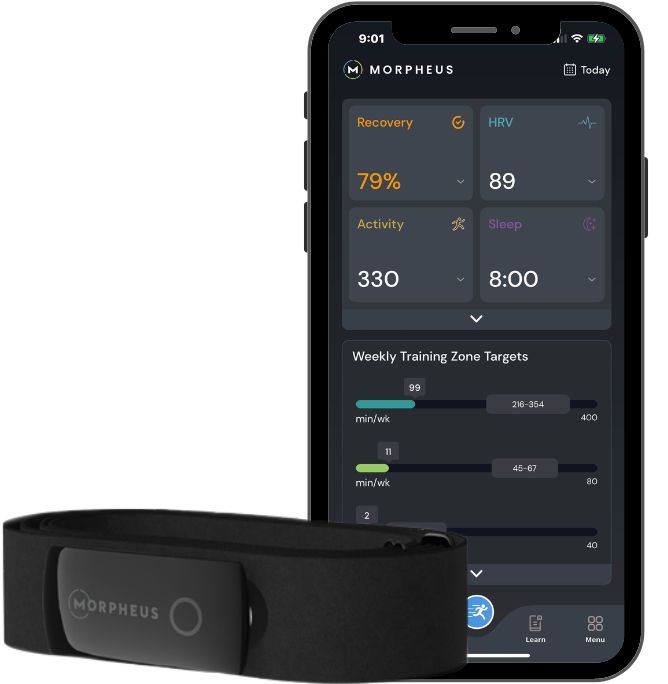FREE Rebound Training Template. Shift Your Body Into the Recovery Zone and Accelerate Your Results
Rebound Training is a targeted way to help your body shift into the the recovery state. This is where the gains of fitness are made.
This template was designed to give you an overview of what a Rebound Training workout looks like and how to use it within your training program.
Rebound Training will:
- Increase blood flow throughout the body to promote tissue repair
- Cause a spike in anabolic hormones that increase protein synthesis and recovery
- Shift the body into the recovery state and accelerate results
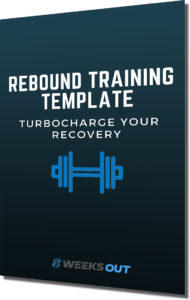
The Rebound Training Session
Rebound training is made up of four different components. Each stage of the workout is designed to help your body shift into the recovery state. This is where the real gains of training are made and the key to getting the most out of your time and hard work in the gym.
Each Rebound Training session is made up of four components:
-
1
Recovery breathing exercises
Learn to breath more efficiently and reset your autonomic nervous system to enhance recovery
-
2
Recovery Zone Training
Stimulate increased blood flow and develop aerobic conditioning
-
3
Strength stimulation
Prime your central nervous system for recovery
-
4
Recovery cool down
Bring your back back down to baseline more effectively to jump start the recovery process
Sample Rebound Workout:
| EXERCISE | SETS | REPS | TIME | NOTES | |||||
|---|---|---|---|---|---|---|---|---|---|
| Bear breathing | 3 | 5 | Focus on full exhalation | ||||||
| Tempo intervals: | Stay in recovery zone | ||||||||
| Stationary bike or rower | 5-10 min | ||||||||
| Prowler push/pull | 5-10 min | ||||||||
| Jump rope or med ball throws | 5-10 min | ||||||||
| Deadlifts | 3 | 2-3 | 80-90% | Drop weight from top if possible | |||||
| Push-ups | 1 | AMRAP | |||||||
| Recovery cool down on bike | 3 min | ||||||||
| Bear breathing | 2 | 5 | |||||||
| Stretch and foam roll | 3-5 min | ||||||||
1 - Recovery Breathing
The first place every Rebound Training session starts with is with 1-3 recovery breathing exercises. These not only help improve your ability to breathe efficiently and deliver more oxygen, they support better mobility and overall movement quality as well. There many different recovery breathing exercises and variations, but the easiest one to start with to learn the basic concept is the Bear breathing progression:
The Bear Breathing Progression
The bear breathing progression is the first place to start to learn how to perform recovery breathing exercises the right way.
In this video from my BioForce Conditioning Coach Certification, Mike Robertson of iFast demonstrates the proper position and technique for each of the three exercises in the progression.
2 - Recovery Zone Training
Recovery zone training is an incredibly effective way to help jump start your recovery by increasing blood flow and circulation, without causing additional stress on the body. The key to this is selecting the right intensity (the recovery zone) and choosing low impact exercises.
Tempo Intervals
Tempo intervals are a particular method of interval training originally developed to train world-class sprinters.
They also happen to be one of the best ways to train in your recovery zone and they can be done with a variety of exercises.
While Tempo intervals can be done without a heart rate monitor, it's more effective to use one to gauge the right intensity.
In this video from my BioForce Conditioning Coach Certification, I show you how to get the most out of tempo intervals using Morpheus
3 - Strength Stimulation
Although most people use strength training to develop strength, power and improve body composition, it can also be used as a powerful tool in your recovery arsenal. This is because when in used in low volumes, it stimulates the central nervous system and triggers a hormonal release that can accelerate recovery.
Strength Stimulation
The best way to stimulate recovery using strength training is to use a fairly heavy load (80-90%), but only for a few sets—usually 2-3 working sets.
Exercises that work the whole body while minimizing the eccentric (negative) load like a Deadlift or Olympic lift with a drop from the top position work best, but other similar exercises can be used as well.
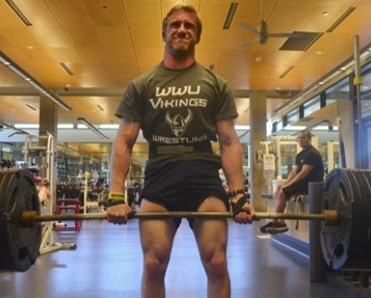
4 - Recovery Cool Down
Although it's often forgotten, the cool down is just as important as the warm up. This is because it helps return the body back to its normal resting state and jump start recovery.
The goal of the cool down should be to bring your heart rate down below 100bpm and help turn on the parasympathetic nervous system. This is the branch of the nervous system that's responsible for recovery and it can be stimulated by going through a specific cool down process.
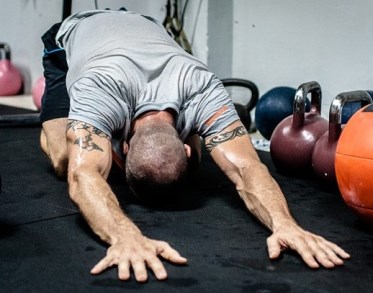
Relax and recover
The recovery cool down should start with a few minutes of low intensity exercise to drop your heart rate and help flush out the metabolic byproducts that naturally occur during training. This should be followed by recovery breathing to help bring the heart rate down further and stimulate the parasympathetic nervous system.
Finally, finish with light soft tissue work such as foam rolling and stretching. These should be done with only light to moderate pressure, not to the point of any pain or discomfort. The entire recovery cool down should take less than 10 minutes from start to finish.
Get Started with Rebound Training
Training Guidelines:
Getting started with Rebound Training is easy. Start by working through the sample workout provided and make any changes necessary depending on your available equipment and preferred exercises.
This will give you the opportunity to feel the difference that a Rebound Training session can make in your recovery.
To get the most out of Rebound Training, follow these basic guidelines:
- Incorporate 1-2 Rebound Training workouts per week
- Total training time should be 30-45 minutes
- Use a variety of exercises and movement patterns
- For maximum benefit, avoid stimulants for 3-4 hours after a workout
- Target a 4-6% increase in recovery when using Morpheus
When done as I've outlined, you should feel noticeably better after a Rebound Training session. This is the best sign that your body has shifted into the recovery state and more energy is being directed towards helping your body recover and improve.
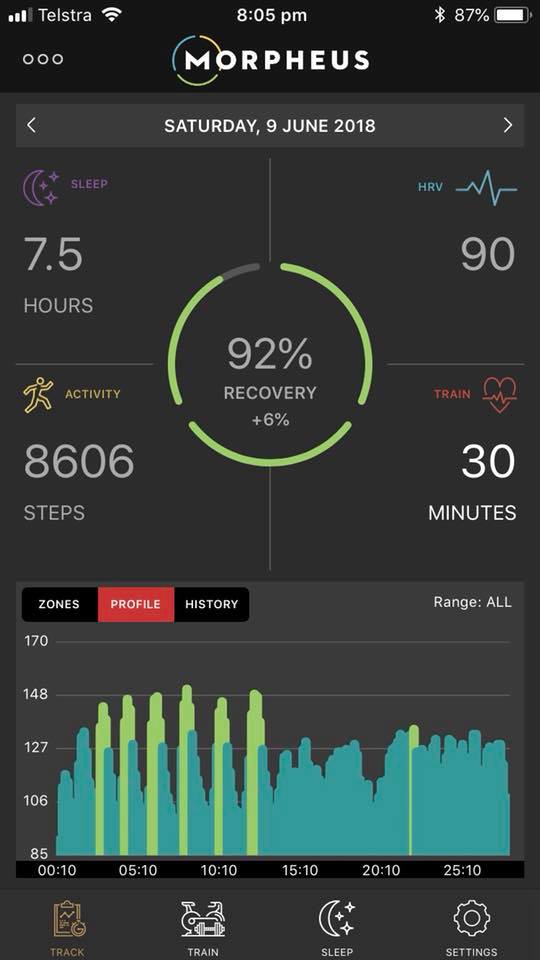
Target a 4-6% increase in recovery when using Morpheus
Train smarter. Recover faster.
The main reason Rebound Training is such a powerful tool is because it can accelerate your recovery.
This is so important because what most people don't realize, is that recovery is what sets the upper limit for how much you can train.
What this means is that the faster you can recover, the more you can train. The more you can train, the faster you'll reach your goals.
Finding the right balance between training and recovery is absolutely essential. That's why I created Morpheus, the best way to train smarter and recover faster.
Turn your data into fitness
Most fitness wearables today do a good job of telling what you've already done. How many hours you've sleep. How many steps you took yesterday.
What they don't do, is help you understand what that means or how what you did yesterday impacts what should do today.
Morpheus was designed to change that and unlock the power of recovery to help you train smarter and get more out of your workouts.
Each day, Morpheus gives you a recovery score based on your HRV, sleep, activity, training, and more.
From all this data, Morpheus calculates your personalized heart rate zones to help you dial in the right intensity and get more out of your training.
No more guesswork. Just smarter training and faster recovery.

